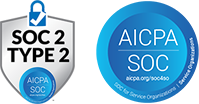What Is Employee Self-Service (ESS)?
Employee Self-Service (ESS) is a digital portal or tool that allows employees to view and manage their own HR-related data—such as personal information, benefits elections, time-off requests, payroll details, and performance goals—without direct HR intervention. By connecting to the human resources information system (HRIS) and payroll engines, ESS centralizes transactions in one user-friendly interface, reducing administrative overhead and empowering employees with real-time visibility into their records.
Why Employee Self-Service Matters
Manual HR transactions—emailing forms, paper approvals, help-desk tickets—consume time and introduce errors. ESS automates routine tasks, cuts processing time by up to 60%, and frees HR to focus on strategic initiatives. It also improves data accuracy by putting control directly in employees’ hands and enhances transparency, which drives trust and satisfaction.
Where Employee Self-Service Is Used
ESS platforms are deployed across industries and organization sizes:
- Time & Attendance: Employees log hours, view schedules, and submit swap or overtime requests.
- Benefits Administration: Staff enroll in health, retirement, and wellness programs during open enrollment or qualifying events.
- Payroll Access: Workers download pay stubs, tax documents, and update direct-deposit or withholding settings.
- Talent Management: Individuals track goals, complete self-assessments, and view career-development resources.
- Compliance & Training: Employees register for mandatory courses, track certifications, and attest to policy acknowledgments.
Employee Self-Service Key Benefits
- Operational Efficiency: Automates approvals and data updates, reducing transaction times and HR help-desk volume.
- Data Accuracy: Direct employee input minimizes transcription errors and outdated information.
- Engagement & Transparency: Instant access to pay, PTO balances, and development plans builds trust.
- Cost Savings: Cuts paper, postage, and administrative labor, often recouping ESS investment within one year.
- Analytics Integration: Feeds user-driven data into People Analytics dashboards—uncovering trends in absenteeism, benefits usage, and goal progress.
Best Practices & Examples
- Single Sign-On (SSO): Enable SSO via corporate credentials to simplify access and enhance security.
- Mobile Accessibility: Offer a responsive or native mobile app so employees can transact on the go—one retailer saw a 50% increase in PTO submissions via mobile.
- Role-Based Views: Configure dashboards so managers can review team metrics (time-off trends, completion rates) while individuals see only their own data.
- Automated Alerts: Trigger notifications for upcoming enrollment windows, pending approvals, or expiring certifications.
- Integrated Help: Embed contextual support—FAQs and chatbots—directly within the ESS interface to guide users through complex transactions.
Conclusion
Employee Self-Service transforms HR from a transaction-driven function into a strategic partner by automating routine tasks, improving data quality, and empowering employees with on-demand visibility. When integrated with People Analytics, ESS portals become rich data sources for workforce insights—enabling proactive planning and fostering a culture of transparency and ownership.
Employee Self-Service (ESS) FAQs
Q: How do you login to ESS for employees?
Employees typically log in to ESS via a corporate portal or mobile app using single sign-on (SSO) with their network credentials. Once authenticated, they can access all self-service functions—time, benefits, and payroll—through the dashboard.
Q: What is an ESS tool?
An ESS tool is any software or portal—part of an HRIS or standalone platform—that grants employees direct access to view and update HR data, submit requests (PTO, expenses), and retrieve documents (pay stubs, tax forms) without HR assistance.




